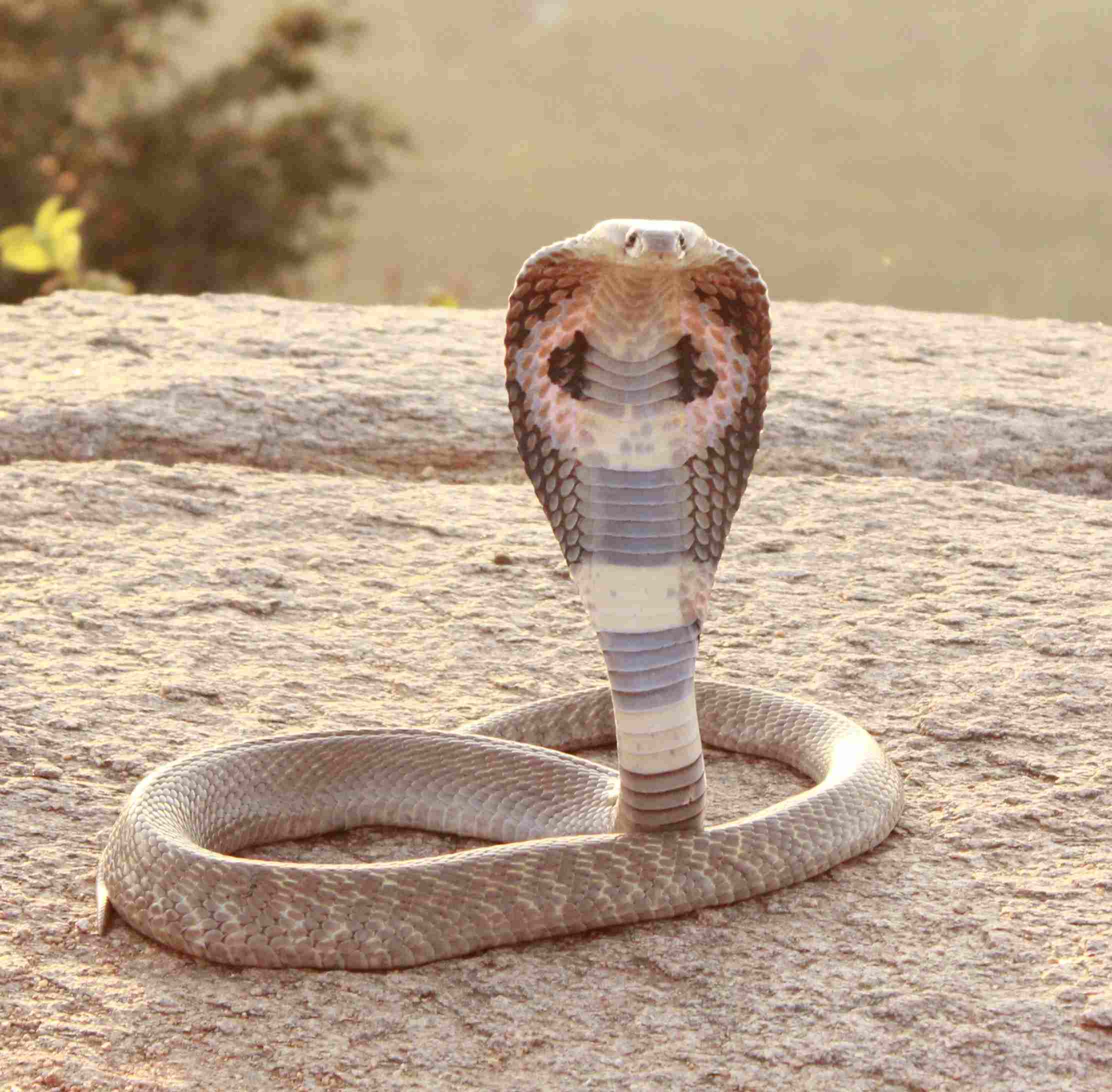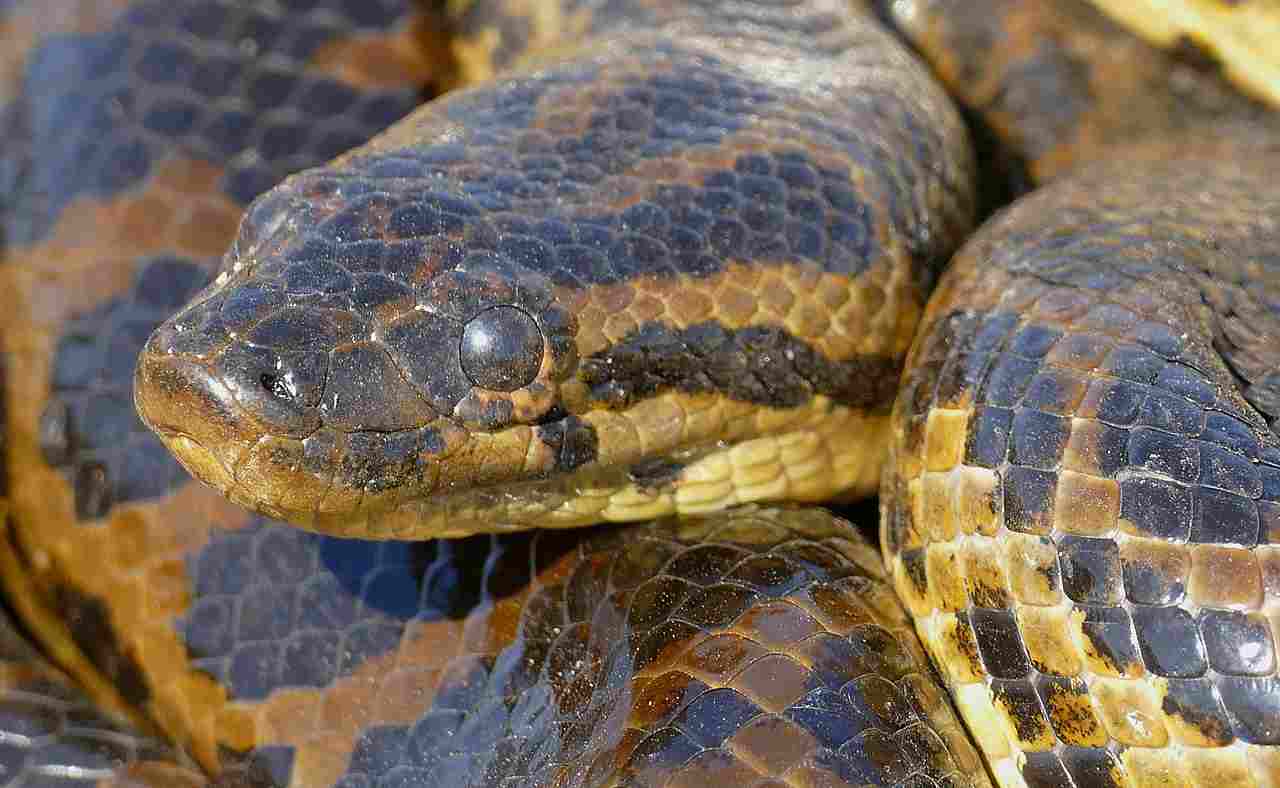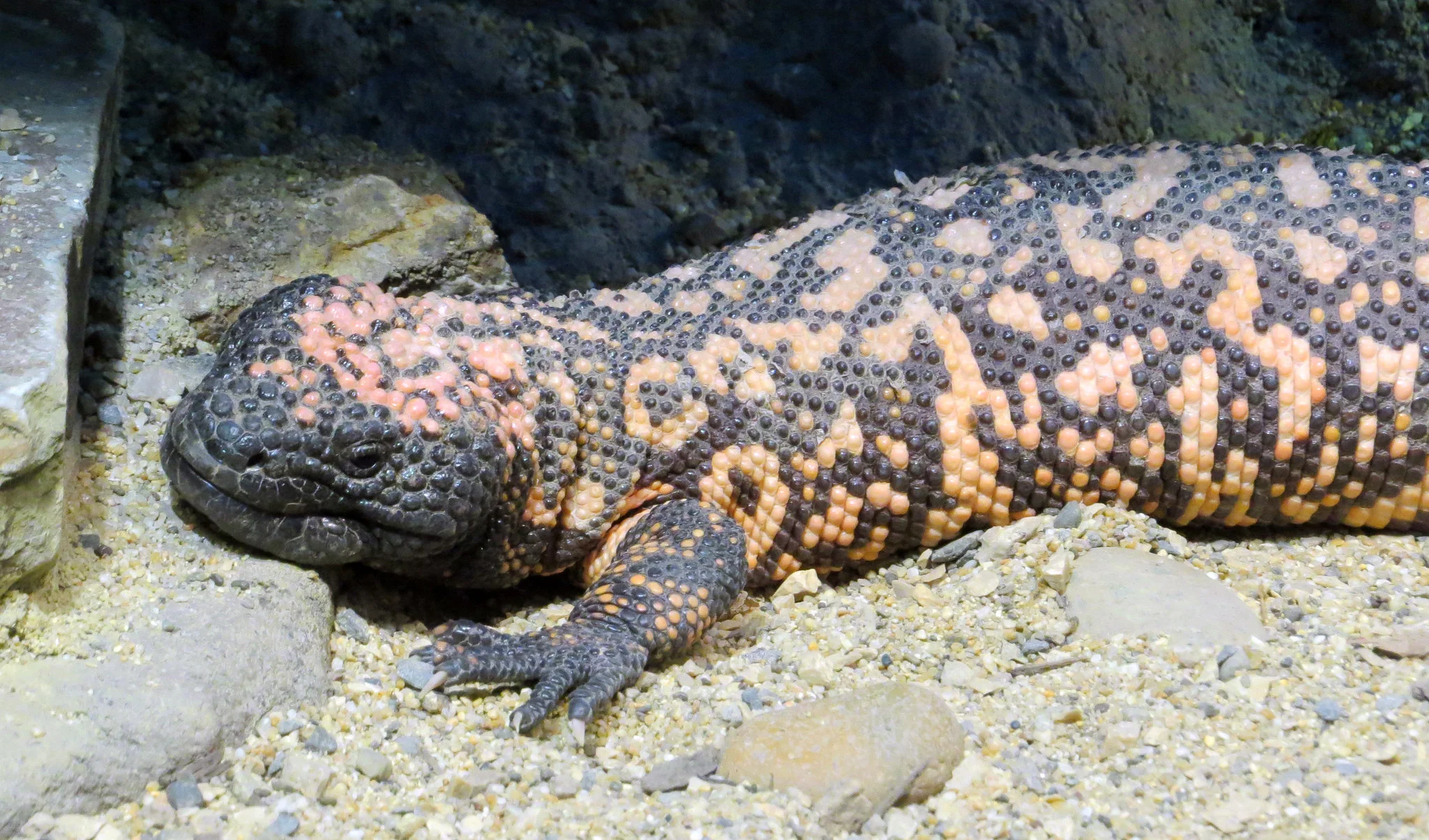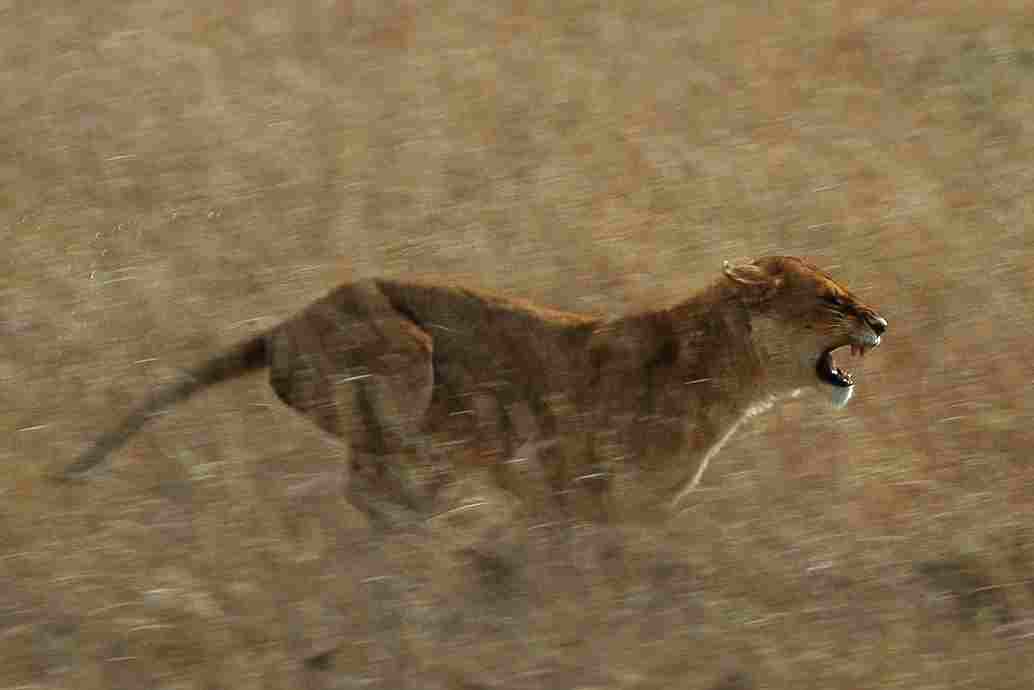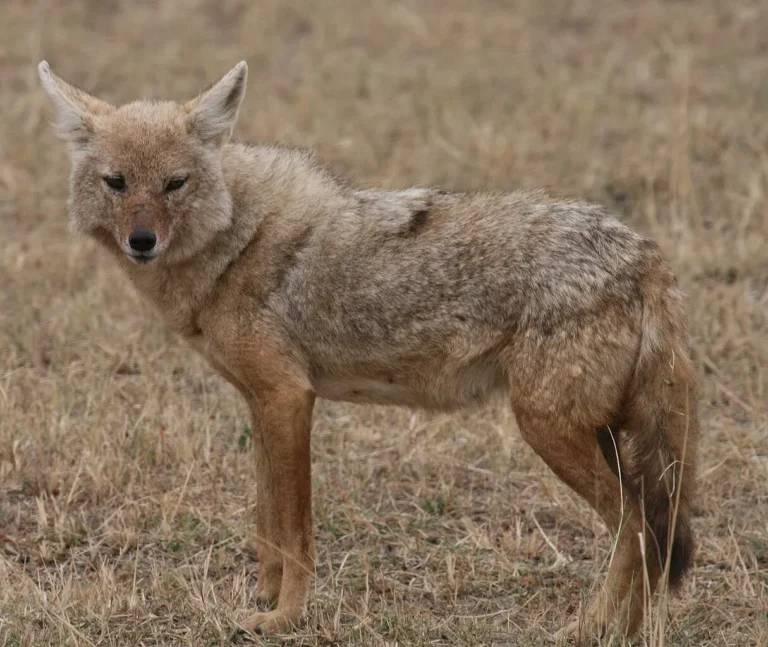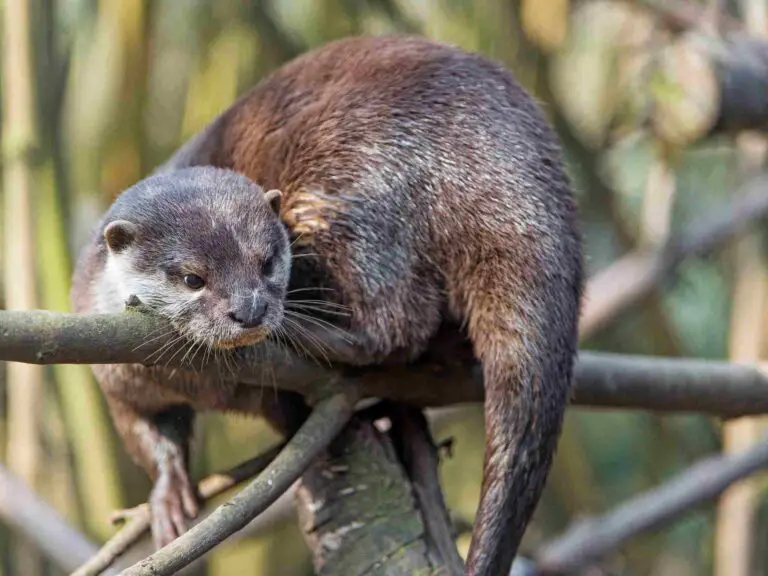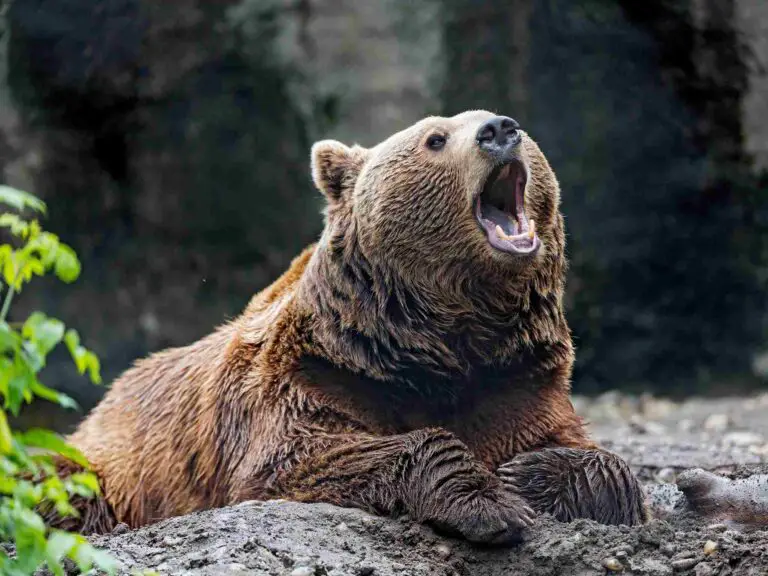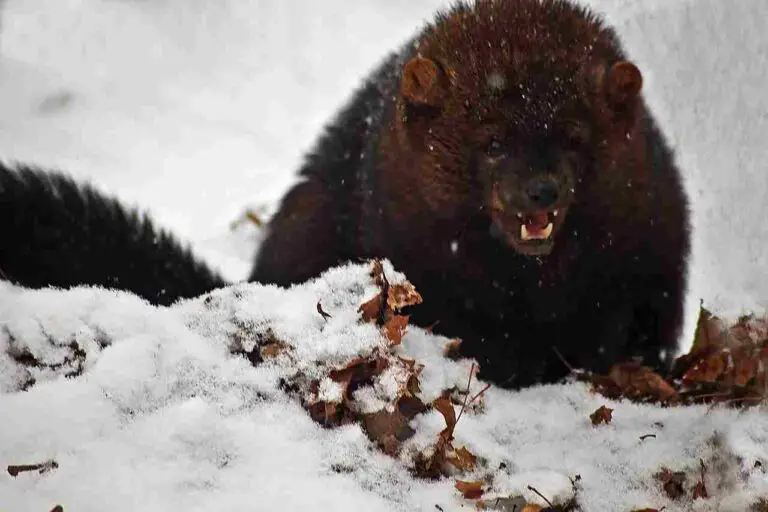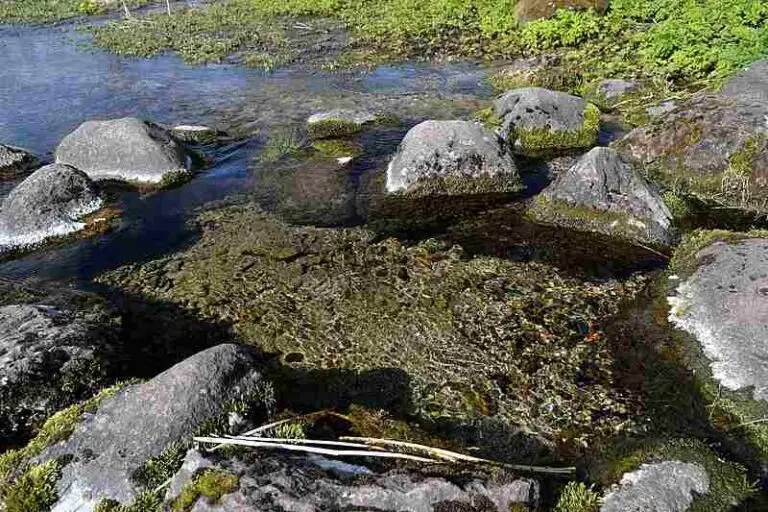Komodo Dragon Vs Human Size, Weight, Overall Comparison
Comparing a Komodo dragon to a human reveals the inherent physical advantages of the reptilian predator. In an unarmed confrontation, the Komodo dragon’s sharp teeth, claws, poisonous venom, and short bursts of speed provide a formidable arsenal with which it can win a human. Additionally, some Komodo dragons grow much larger and notably heavier than the average human, contributing to their dominance in a potential fight.
I. Komodo Dragon vs Human Who Would Win: Physical Disparities in a Confrontation:
– Examining the physical attributes of Komodo dragons and humans underscores the inherent advantages that the reptilian predator holds in a potential confrontation.
II. Natural Armament of Komodo Dragon:
– Komodo dragons are equipped with sharp teeth and claws, providing them with effective weapons for close-quarter combat. Additionally, their poisonous venom further enhances their predatory capabilities, adding an additional layer of danger for potential adversaries.
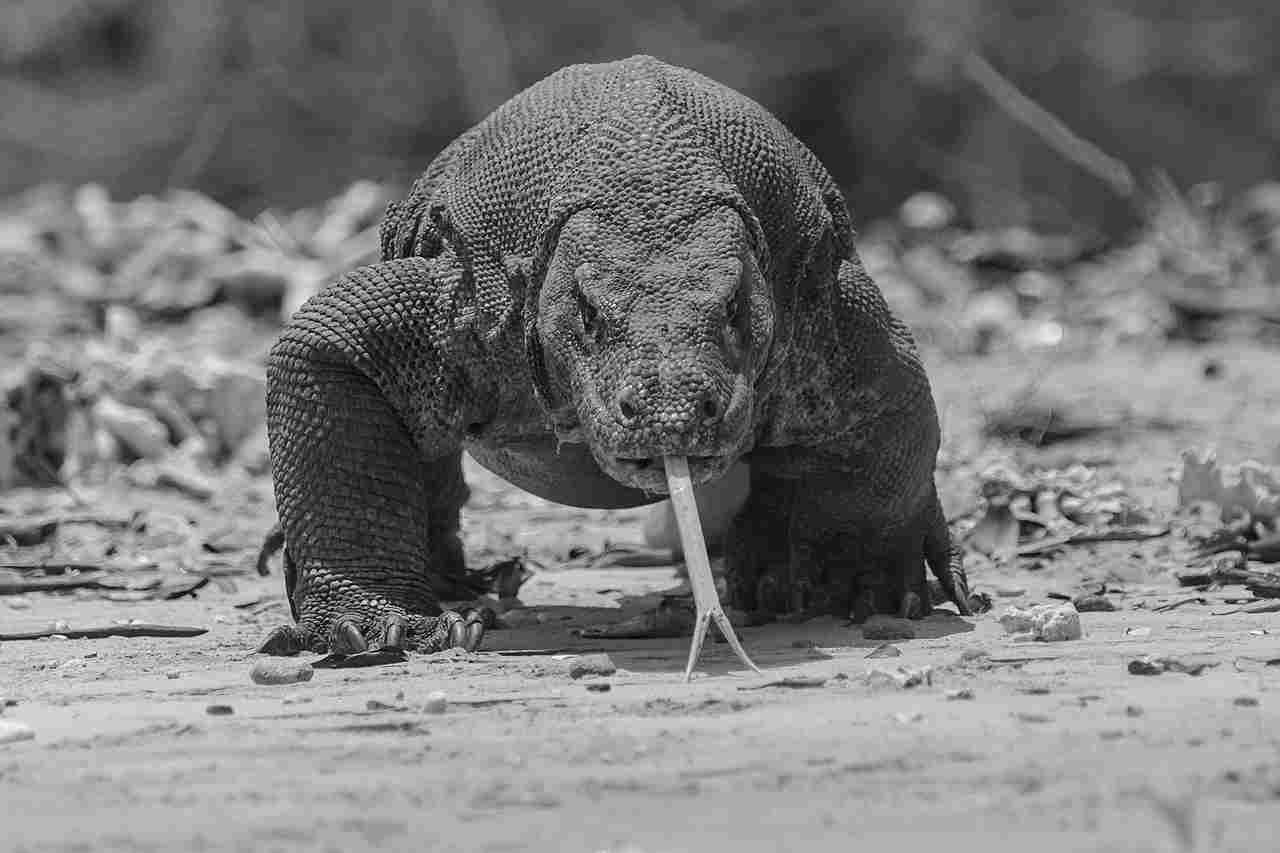
III. Short Bursts of Speed:
– Komodo dragons may lack sustained speed, but they are capable of short bursts of quick movement. This agility allows them to close distances rapidly, particularly in the context of a confrontation.
IV. Size and Weight Disparities:
– Some Komodo dragons grow much larger and notably heavier than the average human. This significant size and weight advantage further contributes to the Komodo dragon’s dominance in a physical altercation.
V. Unarmed Human Vulnerability:
– In an unarmed encounter, a human faces vulnerability against the natural armament and physical attributes of a Komodo dragon. The reptilian predator’s combination of sharp teeth, claws, venom, and size creates a challenging scenario for an unarmed human.

VI. Real-life Predator Dynamics:
– In a real-life confrontation between an unarmed human and a Komodo dragon, the reptilian predator’s natural armament, short bursts of speed, and significant size and weight advantages would likely lead to its victory.
VII. Conservation Significance:
– Understanding the potential risks posed by Komodo dragons underscores the importance of conservation efforts. Tailoring strategies to protect both human communities and the reptilian species contributes to the coexistence of diverse ecosystems and the preservation of biodiversity.
*Details of Comparison
| Criteria | Komodo Dragon | Human |
| Taxonomy | Reptile, Varanus komodoensis |
Mammal, Homosapiens
|
| Appearance | Scaled, robust, 8-10 feet length |
Varied physical characteristics, bipedal
|
| Size | 8-10 feet (males) | Average 5-6 feet |
| Weight | 150-200 pounds (males) | 100-250 pounds |
| Bite Force (PSI) | 600 PSI | 150-200 PSI |
| Physical Offensive Adv. | Jaws, sharp teeth, claws |
Tool use, advanced weaponry
|
| Physical Defensive Adv. | Scaled skin, agility |
Cognitive abilities, social cooperation
|
| Speed | Up to 20 km/h | 8-13 km/h |
| Agility | Agile for size, climbs trees, swims |
High agility, fine motor skills
|
| Senses | Good smell, vision; limited hearing |
Well-developed smell, vision, hearing
|
| Overall Physical Capacity | Specialized for predation |
Versatile for various activities
|
| Habitat Preference | Tropical islands in Indonesia |
Global distribution, diverse habitats
|
| Tracks | Clawed footprints |
Footprints with heel and arch
|
| Lifespan | 20-30 years |
72.6 years (average)
|
| Mode of Feeding | Carnivorous |
Omnivorous, cooking
|
| Intelligence | Limited, instinct-driven |
Highly intelligent, cognitive abilities
|
| Social Behavior | Generally solitary |
Highly social with complex structures
|
| Mode of Reproduction | Oviparous, no parental care |
Viviparous, extensive parental care
|
| Parental Behavior | No parental care |
Extensive care and support
|
| Proximity to Human Areas | Remote areas |
Diverse environments, including populated
|
| Behavior Toward Humans | Generally avoidant, can be aggressive |
Varied interactions, from cooperation to
|
| Danger Posed to Humans | Can be dangerous if provoked |
Dangers from various sources
|
| Associated Precautions | Caution in habitats |
Varied precautions for safety, health, and
|
| Conservation Status | Vulnerable |
No specific conservation status; efforts
|
| Conclusion | Both share animal kingdom; diverse behaviors |
Komodo dragons are reptiles, specialized for
island ecosystems, while humans are mammals
with global adaptability and diverse
cultures. |
1. Taxonomy:
Komodo Dragon (Varanus komodoensis):
Kingdom: Animalia
Phylum: Chordata
Class: Reptilia
Order: Squamata
Family: Varanidae
Genus: Varanus
Species: komodoensis
Human (Homo sapiens):
Kingdom: Animalia
Phylum: Chordata
Class: Mammalia
Order: Primates
Family: Hominidae
Genus: Homo
Species: sapiens
2. Appearance:
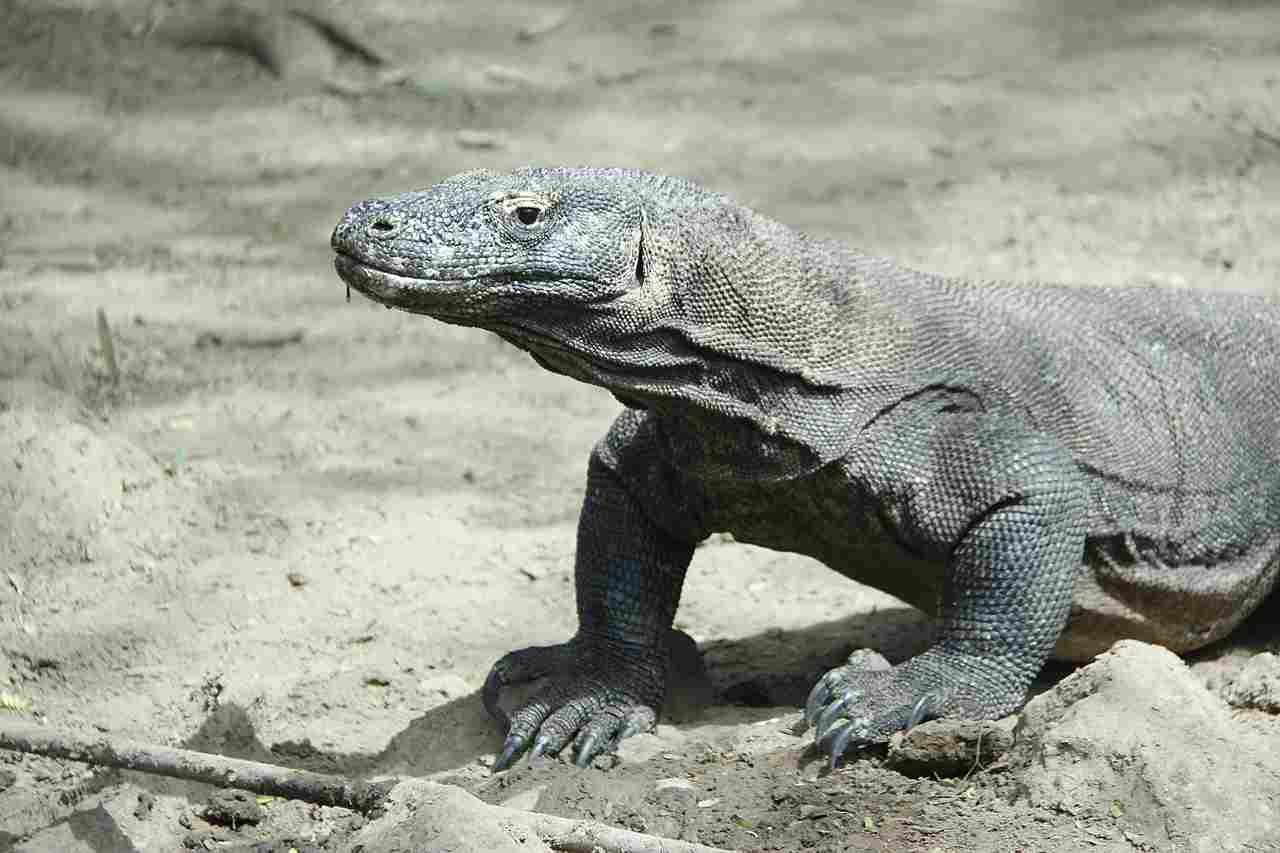
Komodo Dragon:
Robust, scaly skin with a gray-brown coloration.
Can grow up to 10 feet in length.
Stout, muscular build with a long, forked tongue for sensing odors.
Sharp claws and serrated teeth.
Human:
Varied physical characteristics, diverse skin colors, and body types.
Generally bipedal with a comparatively delicate build.
No scales, claws, or pronounced body armor.
Facial features include eyes, nose, and mouth.
Comparison:
Komodo dragons have reptilian features, scales, and a more streamlined build compared to humans.
Humans exhibit greater physical diversity and lack reptilian traits.
Ecological Implications:
Komodo dragons’ appearance aids in hunting and adapting to their natural habitat.
Human appearance is shaped by a wide range of environmental factors and cultural influences.
3. Size:
Komodo Dragon:
Adult males can reach lengths of around 8 to 10 feet.
Females are generally smaller, around 6 to 8 feet.
Human:
Adults typically range from 5 to 6 feet in height.
Size varies globally due to genetic and environmental factors.
Comparison:
Komodo dragons are larger in physical dimensions compared to humans.
Humans display considerable size variation, but on average, they are smaller than Komodo dragons.
Ecological Implications:
Komodo dragons’ size contributes to their position as apex predators in their ecosystem.
Human size impacts resource requirements and ecological footprint in various environments.
4. Weight:
Komodo Dragon:
Adult males can weigh between 150 to 200 pounds.
Females are generally lighter, around 100 to 150 pounds.
Human:
Adult weights vary widely but generally range from 100 to 250 pounds.
Comparison:
Komodo dragons are comparable or heavier than some humans.
Humans, on average, have a wider weight range and can be much heavier than individual Komodo dragons.
Ecological Implications:
Komodo dragon weight impacts their predatory strategies and resource needs.
Human weight influences resource consumption and environmental impact on a global scale.
5. Bite Force (PSI – Pounds per Square Inch):
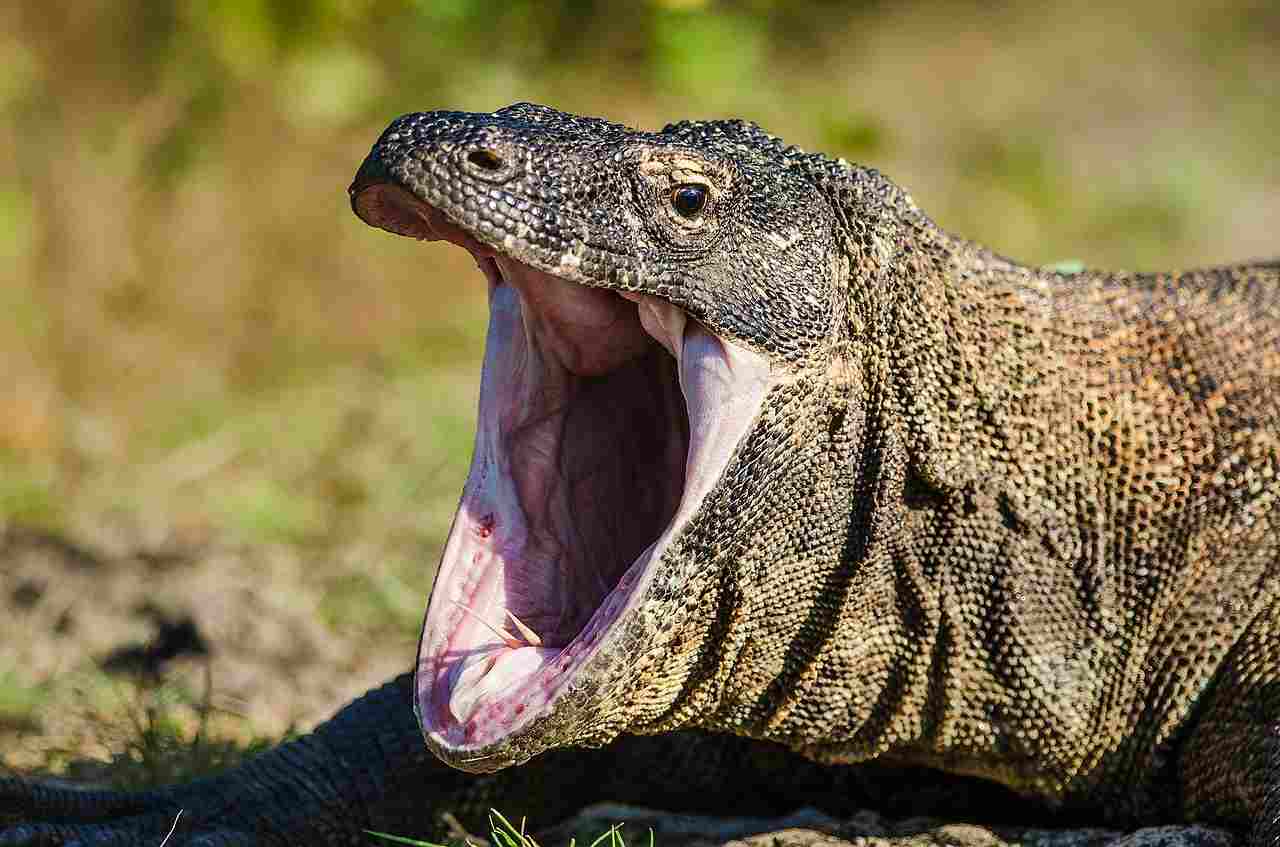

Komodo Dragon:
Estimated to have a bite force of around 600 PSI.
Human:
Human bite force is significantly lower, averaging around 150-200 PSI.
Comparison:
Komodo dragons possess a much stronger bite force than humans.
Human bite force is adapted to the requirements of a varied diet that includes cooked and processed foods.
Ecological Implications:
Komodo dragon bite force is a crucial predatory adaptation.
Human bite force is less specialized due to dietary diversity and cultural practices like cooking.
6. Physical Offensive Advantages:
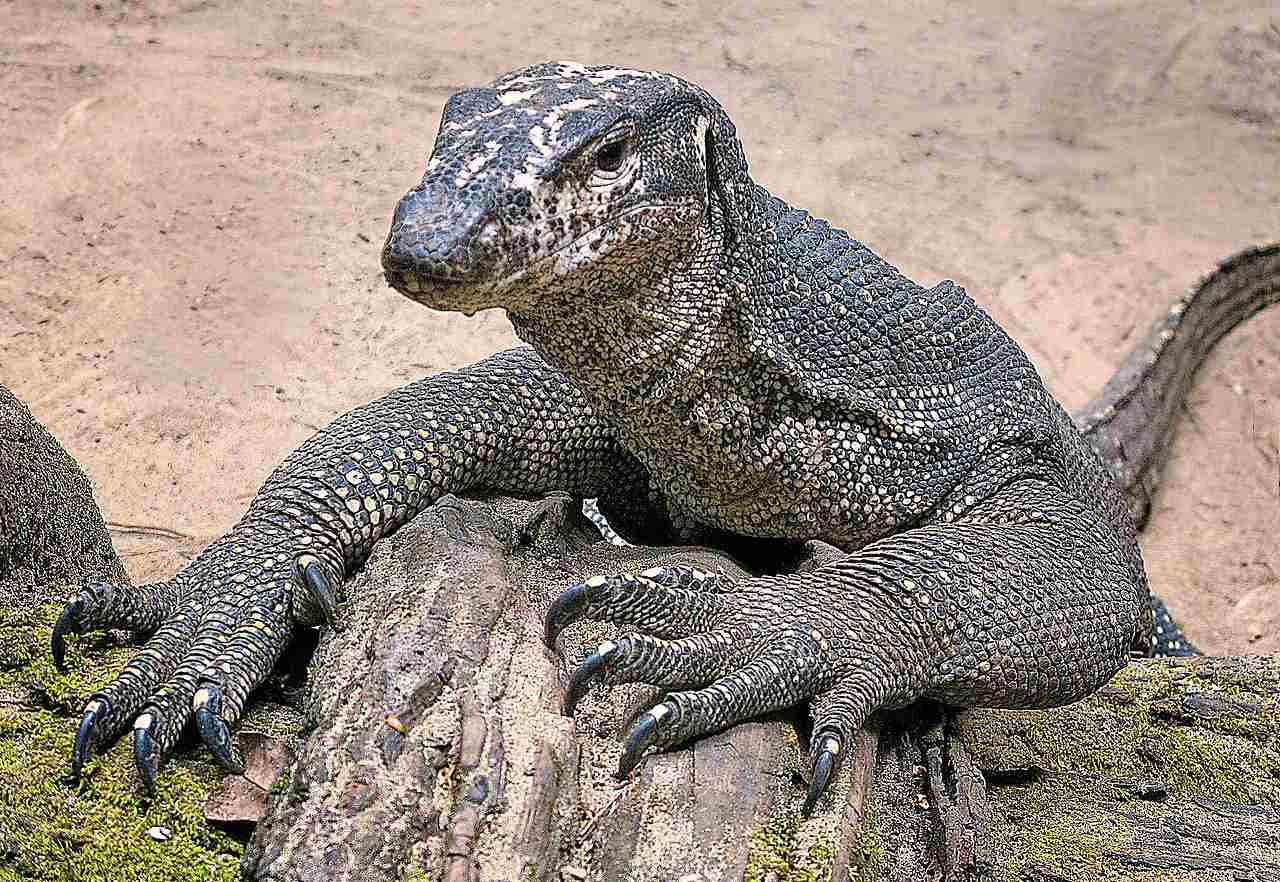

Komodo Dragon:
Powerful jaws with sharp, serrated teeth.
Strong bite force aids in subduing prey.
Claws for grasping and tearing.
Human:
Tool use and advanced weaponry provide offensive capabilities.
Cooperative hunting strategies and adaptability.
Comparison:
Komodo dragons rely on physical attributes for offense.
Humans utilize tools, strategy, and cooperation for offensive endeavors.
Ecological Implications:
Komodo dragon offense contributes to maintaining ecological balance in their habitat.
Human offensive capabilities influence diverse ecological interactions, sometimes leading to environmental impact.
7. Physical Defensive Advantages:
Komodo Dragon:
Tough, scaly skin provides some defense.
Agility for evading threats.
Human:
Cognitive abilities for complex problem-solving and defense.
Social cooperation and the ability to build shelters.
Comparison:
Komodo dragons primarily rely on physical defenses.
Human defense involves a combination of physical and cognitive attributes.
Ecological Implications:
Komodo dragon defenses contribute to their survival in a predator-rich environment.
Human defenses impact our ability to adapt and survive in diverse ecosystems.
8. Speed (Km/hour or Mile/hour):
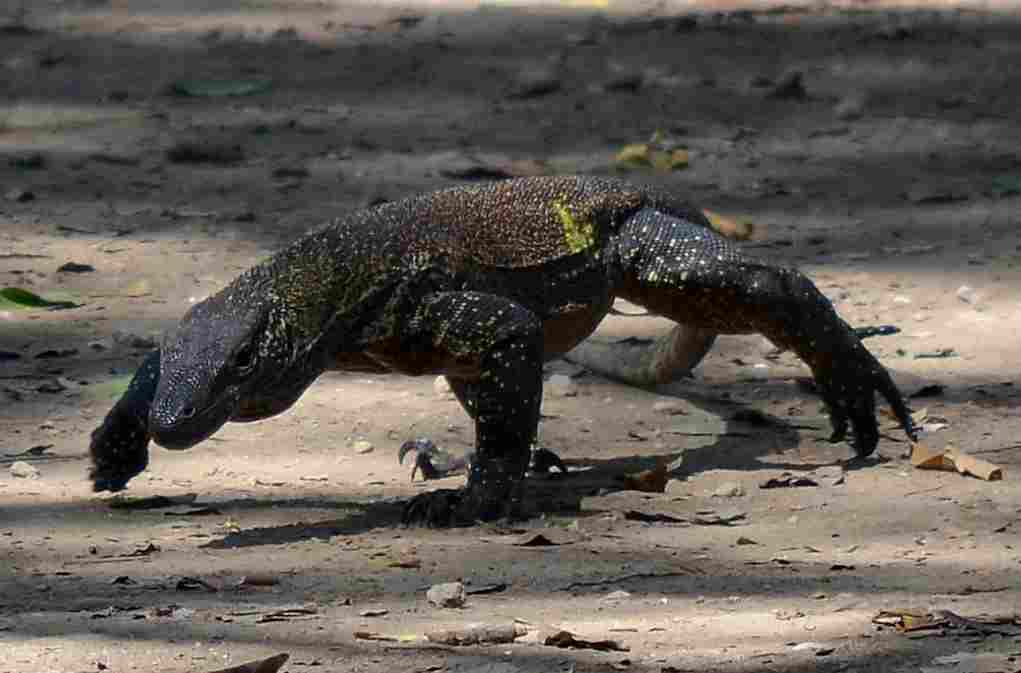

Komodo Dragon:
Can reach speeds up to 20 km/h (12 mph) in short bursts.
Human:
Average running speed is around 8-13 km/h (5-8 mph).
Comparison:
Komodo dragons are faster in short bursts compared to humans.
Humans have better endurance for sustained activities like long-distance running.
Ecological Implications:
Komodo dragon speed aids in hunting and evading threats in their habitat.
Human speed and endurance contribute to various activities, including hunting and gathering.
9. Agility:

Komodo Dragon:
Relatively agile for their size, capable of climbing trees and swimming.
Human:
High level of agility with fine motor skills.
Comparison:
Komodo dragons exhibit agility adapted to their environment.
Human agility is versatile and supports a wide range of activities.
Ecological Implications:
Komodo dragon agility enhances their ability to navigate and adapt to the varied terrain.
Human agility contributes to activities such as tool use, crafting, and navigating diverse environments.
10. Senses:
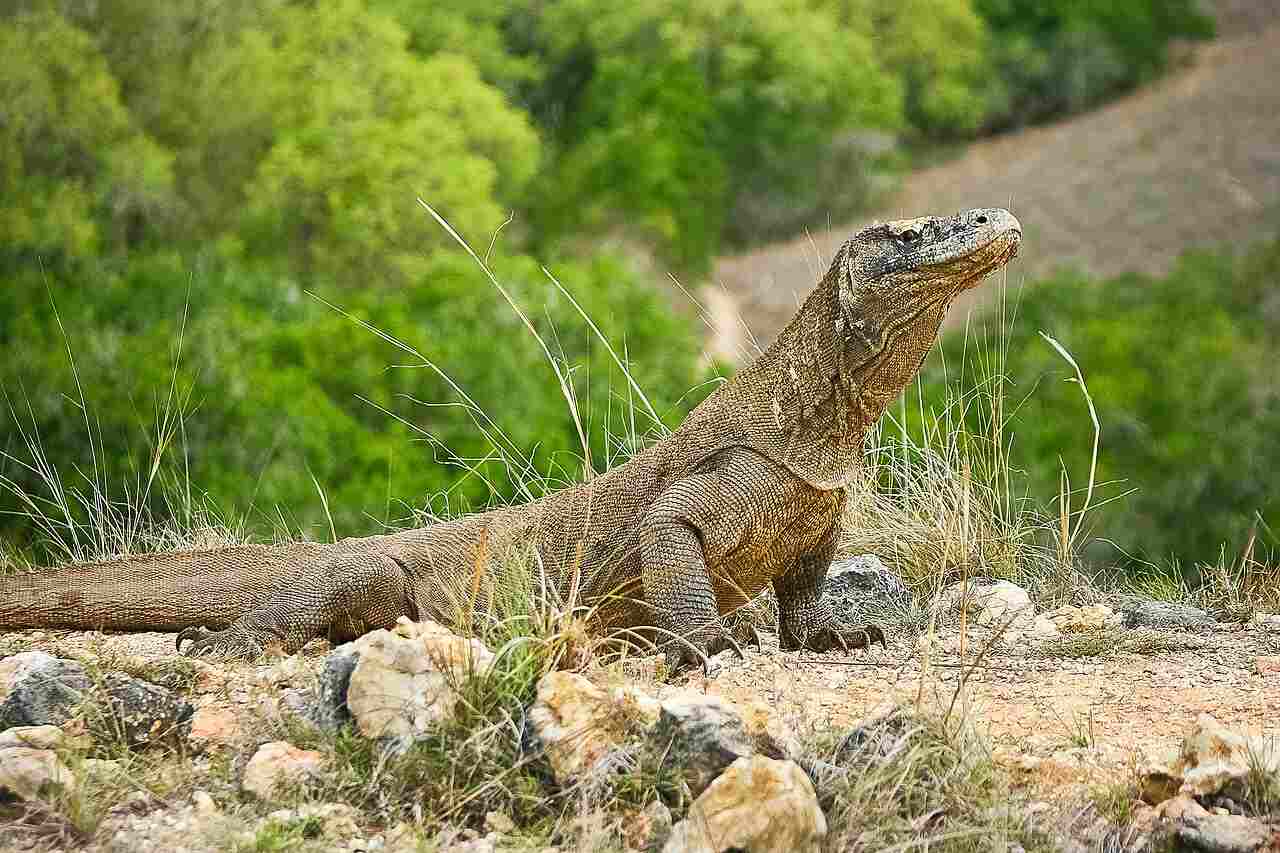
Komodo Dragon:
Excellent sense of smell using a long, forked tongue.
Good vision, particularly attuned to movement.
Limited hearing ability.
Human:
Well-developed senses of sight, hearing, and smell.
Highly evolved cognitive and sensory processing.
Comparison:
Komodo dragons rely heavily on olfaction and visual cues.
Humans have a more balanced and adaptable sensory profile.
Ecological Implications:
Komodo dragon senses aid in hunting and navigating their environment.
Human senses play a vital role in various activities, including hunting, gathering, and communication.
11. Overall Physical Capacity:
Komodo Dragon:
Specialized for predation and survival in their natural habitat.
Physical strength and adaptability to diverse terrains.
Human:
Versatile physical capabilities adapted for a wide range of activities.
High cognitive capacity and tool use.
Comparison:
Komodo dragons are specialized for their ecological niche.
Humans exhibit adaptability across various ecological niches.
Ecological Implications:
Komodo dragon physical capacity contributes to maintaining balance in their ecosystem.
Human versatility impacts ecological interactions and resource utilization.
12. Habitat Preference(s) and Geographic Region:
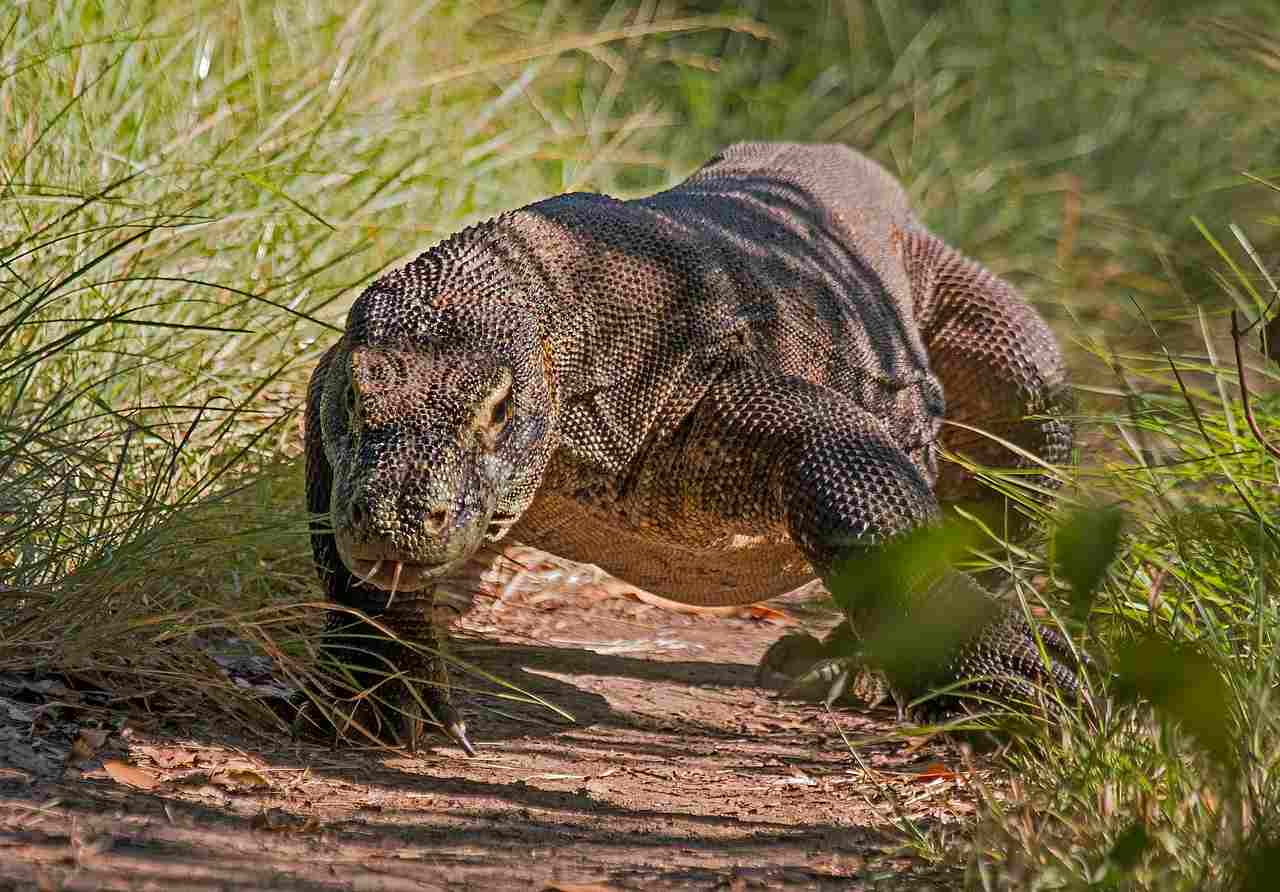
Komodo Dragon:
Prefers tropical forests, savannas, and beaches.
Endemic to Komodo, Rinca, Flores, Gili Motang, and Padar islands in Indonesia.
Human:
Highly adaptable, occupying diverse environments globally.
Comparison:
Komodo dragons are regionally restricted to specific islands in Indonesia.
Humans have a global distribution and adapt to a wide range of climates and habitats.
Ecological Implications:
Komodo dragons’ habitat preference influences their role in specific island ecosystems.
Human adaptability impacts ecosystems on a global scale, influencing biodiversity and resource utilization.
13. Tracks:
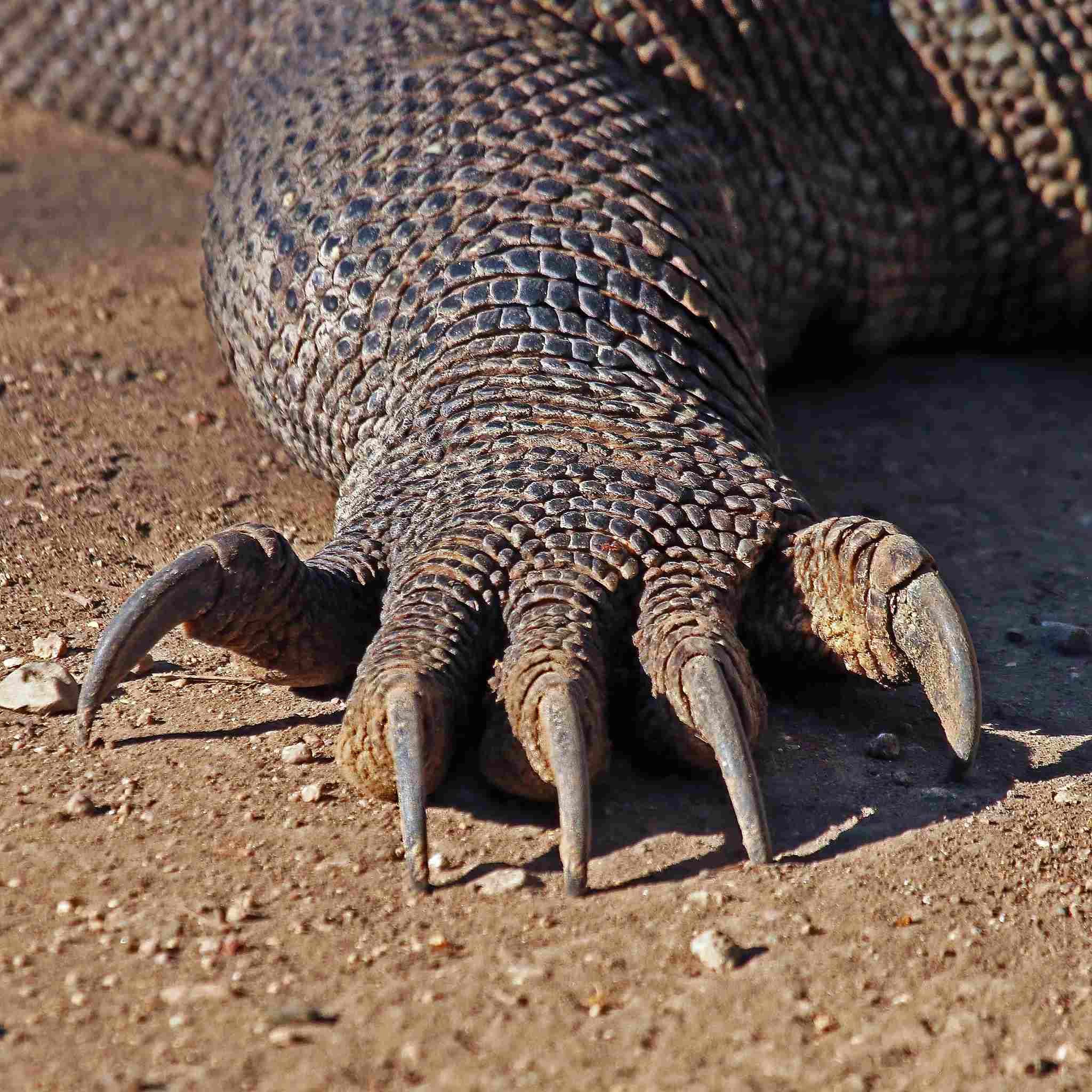
Komodo Dragon:
Distinctive, clawed footprints with five toes.
Human:
Footprints with a heel and distinct arch, usually showing toes.
Comparison:
Komodo dragon tracks reflect their reptilian anatomy.
Human footprints indicate bipedal locomotion with distinct arches.
Ecological Implications:
Komodo dragon tracks contribute to tracking their movements in the wild.
Human footprints can have environmental impact and are used in various ecological studies and tracking.
14. Lifespan:
Komodo Dragon:
Typically 20 to 30 years in the wild.
Longer lifespans in captivity.
Human:
Average global lifespan is around 72.6 years.
Lifespan influenced by various factors including healthcare and lifestyle.
Comparison:
Komodo dragons have a shorter lifespan compared to humans.
Human lifespan is influenced by a complex interplay of genetic, environmental, and lifestyle factors.
Ecological Implications:
Komodo dragons’ relatively shorter lifespan impacts their role in the ecosystem.
Human lifespan influences population dynamics and resource consumption on a global scale.
15. Mode of Feeding:
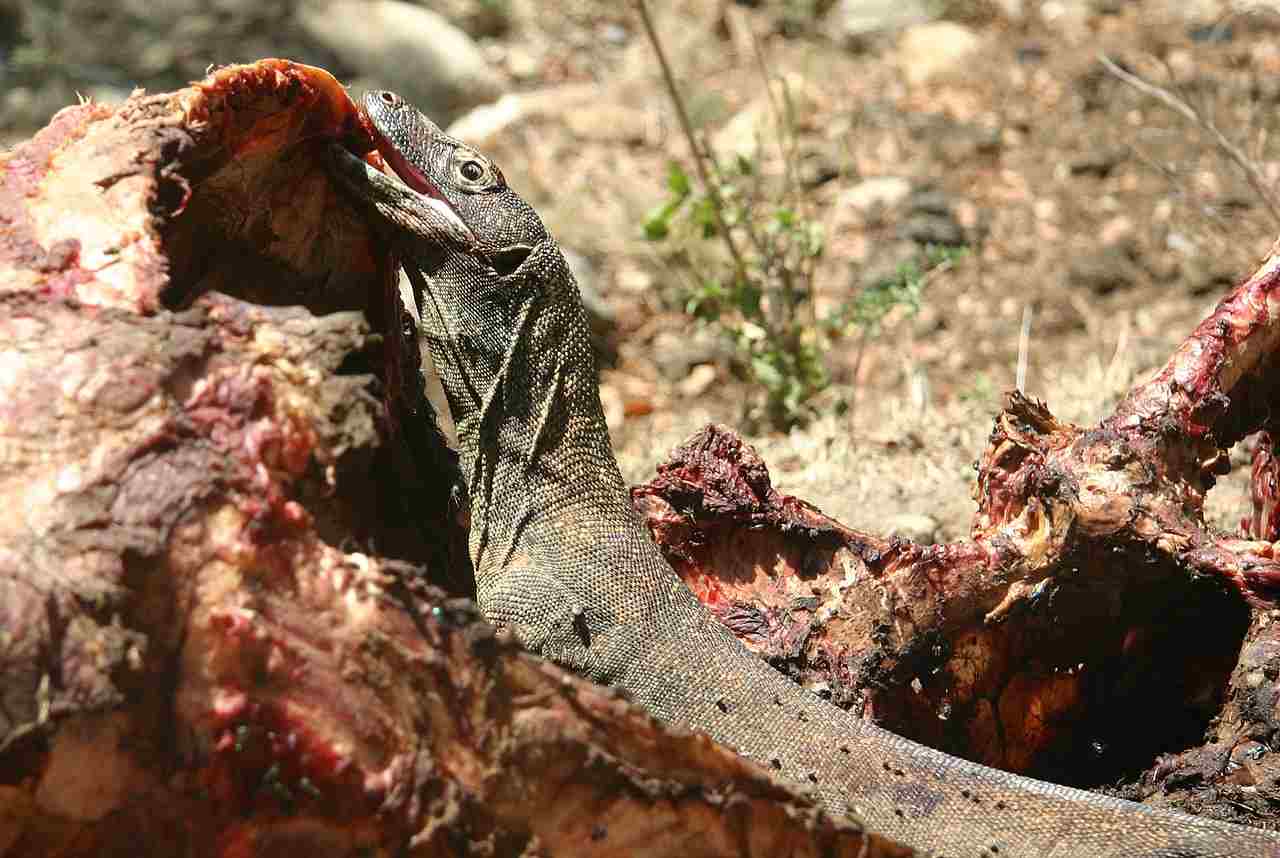
Komodo Dragon:
Carnivorous, feeding on a variety of prey including mammals and birds.
Capable of consuming large prey due to powerful jaws and digestive adaptations.
Human:
Omnivorous, with a diverse diet that includes plant and animal-based foods.
Utilizes cooking and processing methods for food preparation.
Comparison:
Komodo dragons are specialized carnivores with adaptations for hunting.
Human omnivory and cooking methods reflect a more varied and flexible dietary strategy.
Ecological Implications:
Komodo dragons’ feeding behavior impacts prey populations and contributes to ecosystem balance.
Human dietary choices influence agricultural practices, land use, and global food systems.
16. Intelligence:
Komodo Dragon:
Limited cognitive abilities, primarily instinct-driven.
Displays problem-solving skills related to hunting and survival.
Human:
Highly intelligent with complex cognitive abilities.
Advanced problem-solving, tool use, and cultural adaptation.
Comparison:
Komodo dragons exhibit basic intelligence for survival.
Human intelligence is highly developed and contributes to cultural, technological, and scientific advancements.
Ecological Implications:
Komodo dragon intelligence supports their ability to navigate and hunt in their environment.
Human intelligence plays a key role in shaping ecosystems, technology, and global environmental impact.
17. Social Behavior:
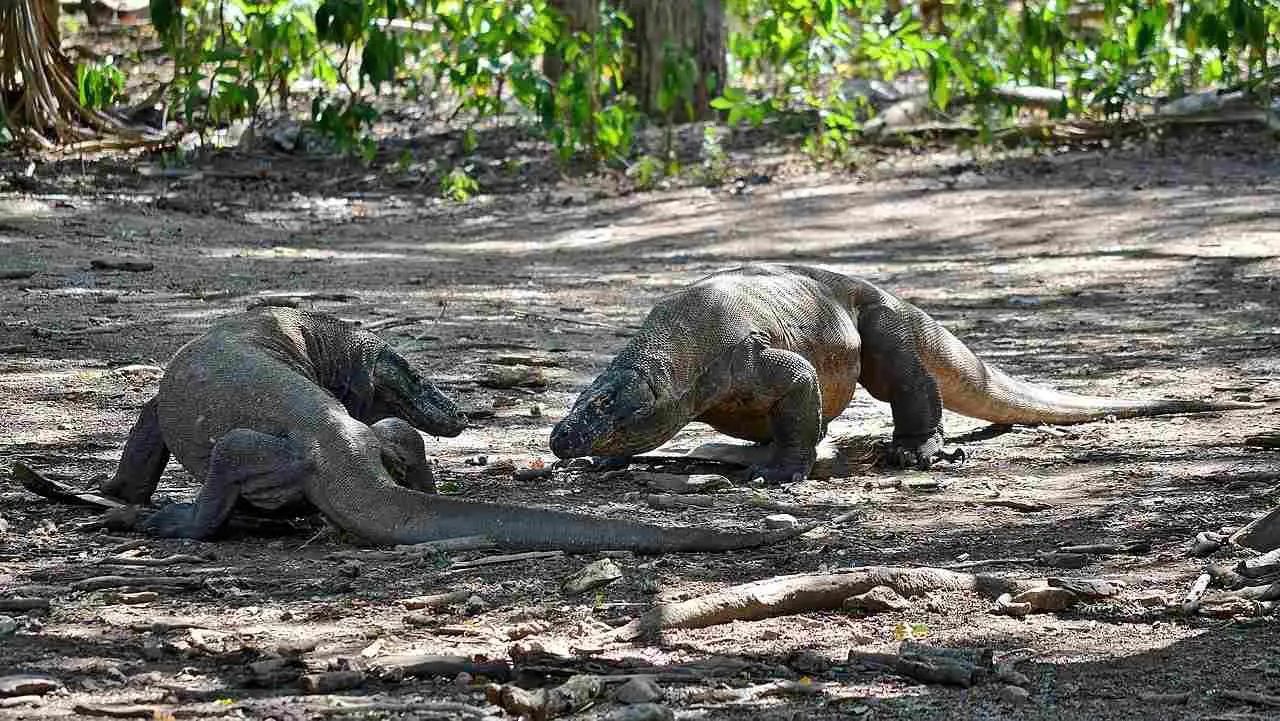
Komodo Dragon:
Generally solitary, except during mating or when feeding on large carcasses.
Aggressive interactions between males during the breeding season.
Human:
Highly social species with complex social structures.
Cooperative behaviors, communication, and cultural practices.
Comparison:
Komodo dragons exhibit limited social behaviors.
Human social structures and behaviors are diverse, complex, and integral to survival and well-being.
Ecological Implications:
Komodo dragon social behavior impacts mating and resource competition.
Human social structures influence resource distribution, cooperation, and cultural practices with broad ecological implications.
18. Mode of Reproduction:
Komodo Dragon:
Oviparous, females lay clutches of eggs in nests.
No parental care; eggs left unattended.
Human:
Viviparous, with internal fertilization.
Extensive parental care and investment in offspring.
Comparison:
Komodo dragons have a more hands-off approach to reproduction.
Human reproduction involves substantial parental care and investment in offspring.
Ecological Implications:
Komodo dragon reproduction contributes to population dynamics without direct parental care.
Human reproductive strategies involve significant parental investment, influencing family structures and social dynamics.
19. Parental Behavior:
Komodo Dragon:
No parental care after laying eggs.
Hatchlings are left to fend for themselves.
Human:
Extensive parental care including feeding, protection, and education.
Prolonged period of dependency for human offspring.
Comparison:
Komodo dragons lack parental care beyond egg-laying.
Human parental behavior is characterized by long-term care and support for offspring.
Ecological Implications:
Komodo dragon lack of parental care influences survival strategies of hatchlings.
Human parental behavior contributes to the well-being and adaptability of the next generation.
20. Proximity to Human-Inhabited Areas:
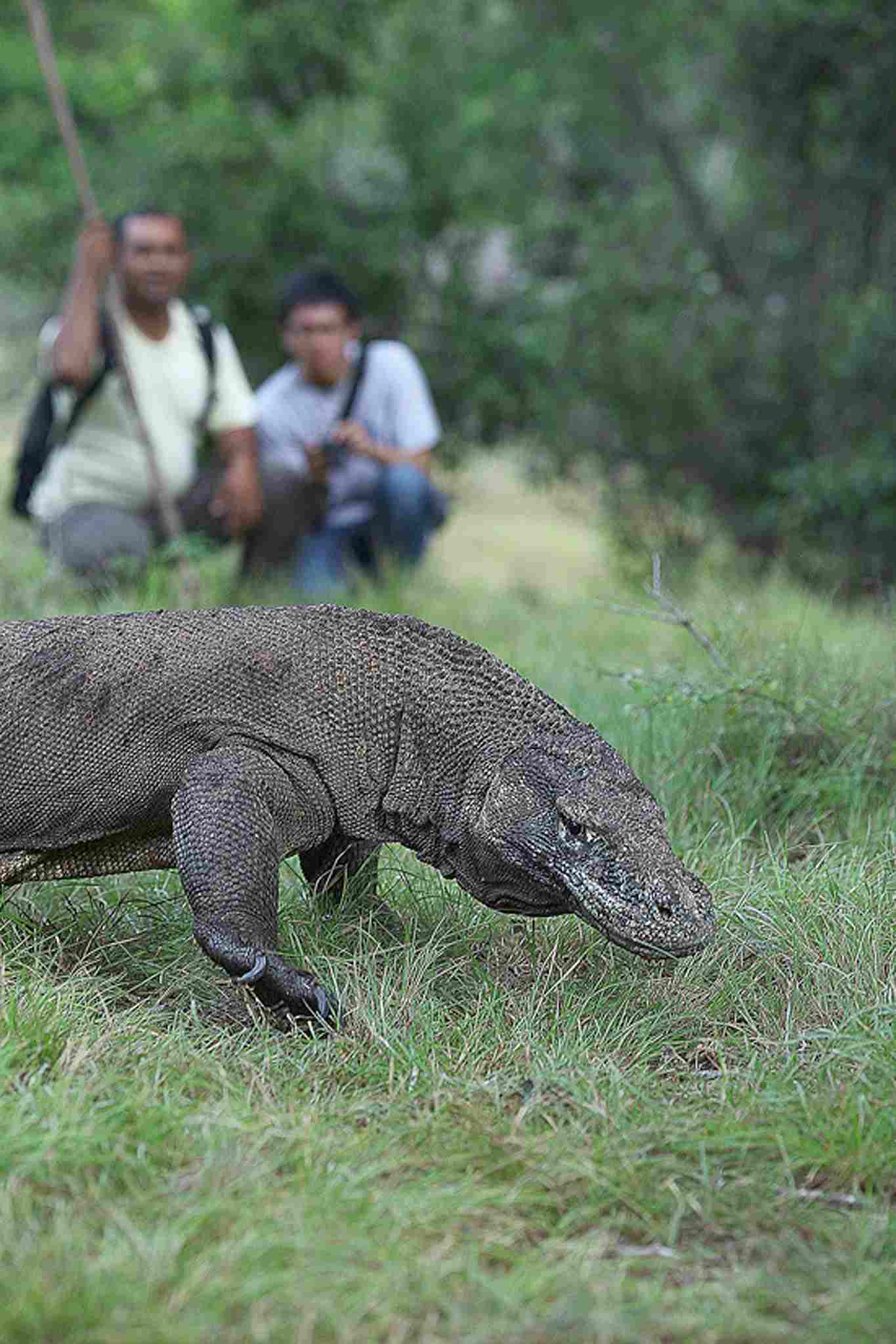
Komodo Dragon:
Generally found in remote, less populated areas.
Human development poses threats to their habitats.
Human:
Globally distributed, occupying various environments, including densely populated areas.
Comparison:
Komodo dragons are less likely to be in proximity to human-inhabited areas.
Humans inhabit diverse environments, including areas with high population density.
Ecological Implications:
Komodo dragons face threats from habitat loss due to human development.
Human proximity to various ecosystems influences biodiversity, resource utilization, and environmental impact.
21. Behavior Toward Humans:
Komodo Dragon:
Generally avoidant of humans but can be aggressive if threatened.
Instances of attacks on humans reported, often linked to habitat encroachment.
Human:
Varied interactions, ranging from cooperation to conflict.
Human impact on wildlife and ecosystems can be detrimental.
Comparison:
Komodo dragons usually avoid human contact unless provoked.
Human behavior towards wildlife varies widely and can have positive or negative ecological consequences.
Ecological Implications:
Komodo dragon behavior towards humans reflects their response to habitat disturbance.
Human behavior towards wildlife influences conservation efforts and the overall health of ecosystems.
22. Danger Posed to Humans:
Komodo Dragon:
Can be dangerous if provoked or cornered.
Infrequent but documented cases of Komodo dragon attacks on humans.
Human:
Potential dangers from various sources including accidents, diseases, and interpersonal conflicts.
Comparison:
Komodo dragons pose a threat if agitated, but direct encounters are rare.
Human dangers are diverse and can arise from various factors including natural disasters, accidents, and social conflicts.
Ecological Implications:
Komodo dragon dangers highlight the importance of respecting wildlife and understanding their behavior.
Human dangers have broad ecological implications, influencing population dynamics and resource utilization.
23. Associated Precautions:
Komodo Dragon:
Caution advised when in Komodo dragon habitats.
Guidelines in place to minimize human-wildlife conflicts.
Human:
Varied precautions depending on context, including safety measures, health practices, and environmental conservation efforts.
Comparison:
Precautions with Komodo dragons focus on avoiding provocation and minimizing disturbances.
Human precautions encompass a wide range of measures to ensure safety, well-being, and environmental sustainability.
Ecological Implications:
Precautions with Komodo dragons contribute to wildlife conservation and habitat protection.
Human precautions impact ecological sustainability and the preservation of biodiversity.
24. Conservation Status:
Komodo Dragon:
Listed as “Vulnerable” on the IUCN Red List.
Facing threats from habitat loss, poaching, and potential impacts of climate change.
Human:
No specific conservation status as a species.
Various human populations may face threats, but conservation efforts focus on ecosystems and biodiversity.
Comparison:
Komodo dragons have a specific conservation status due to population decline and threats.
Human conservation efforts are broader, encompassing the protection of ecosystems and biodiversity.
Ecological Implications:
Komodo dragon conservation efforts are crucial for maintaining biodiversity in their specific habitat.
Human conservation efforts play a pivotal role in sustaining global ecosystems and protecting diverse species.
*Summary of Comparison
Taxonomy:
Komodo Dragon: Reptile, Varanus komodoensis.
Human: Mammal, Homo sapiens.
Appearance:
Komodo Dragon: Scaled, robust, 8-10 feet length, gray-brown coloration.
Human: Varied physical characteristics, no scales, bipedal.
Size:
Komodo Dragon: 8-10 feet (males).
Human: Average 5-6 feet.
Weight:
Komodo Dragon: 150-200 pounds (males).
Human: 100-250 pounds.
Bite Force (PSI):
Komodo Dragon: 600 PSI.
Human: 150-200 PSI.
Physical Offensive Advantages:
Komodo Dragon: Jaws, sharp teeth, claws.
Human: Tool use, advanced weaponry.
Physical Defensive Advantages:
Komodo Dragon: Scaled skin, agility.
Human: Cognitive abilities, social cooperation.
Speed:
Komodo Dragon: Up to 20 km/h.
Human: 8-13 km/h.
Agility:
Komodo Dragon: Agile for size, climbs trees, swims.
Human: High agility, fine motor skills.
Senses:
Komodo Dragon: Good smell, vision; limited hearing.
Human: Well-developed smell, vision, hearing.
Overall Physical Capacity:
Komodo Dragon: Specialized for predation.
Human: Versatile for various activities.
Habitat Preference and Region:
Komodo Dragon: Tropical islands in Indonesia.
Human: Global distribution, diverse habitats.
Tracks:
Komodo Dragon: Clawed footprints.
Human: Footprints with heel and arch.
Lifespan:
Komodo Dragon: 20-30 years.
Human: 72.6 years (average).
Mode of Feeding:
Komodo Dragon: Carnivorous.
Human: Omnivorous, cooking.
Intelligence:
Komodo Dragon: Limited, instinct-driven.
Human: Highly intelligent, cognitive abilities.
Social Behavior:
Komodo Dragon: Generally solitary.
Human: Highly social with complex structures.
Mode of Reproduction:
Komodo Dragon: Oviparous, no parental care.
Human: Viviparous, extensive parental care.
Parental Behavior:
Komodo Dragon: No parental care.
Human: Extensive care and support.
Proximity to Human-Inhabited Areas:
Komodo Dragon: Remote areas.
Human: Diverse environments, including populated areas.
Behavior Toward Humans:
Komodo Dragon: Generally avoidant, can be aggressive if threatened.
Human: Varied interactions from cooperation to conflict.
Danger Posed to Humans:
Komodo Dragon: Can be dangerous if provoked.
Human: Dangers from various sources.
Associated Precautions:
Komodo Dragon: Caution in habitats.
Human: Varied precautions for safety, health, and conservation.
Conservation Status:
Komodo Dragon: Vulnerable.
Human: No specific conservation status; conservation efforts focus on ecosystems.
Conclusion
-Similarities:
Both Komodo dragons and humans belong to the animal kingdom, sharing a common biological foundation.
Both species exhibit complex behaviors shaped by their respective ecological niches.
-Differences:
Komodo dragons are reptiles, specialized for predation in specific island ecosystems.
Humans are mammals with a global distribution, displaying remarkable adaptability and diverse cultural practices.
